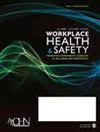实施 COVID-19 封闭式/开放式 POD 伙伴关系:职业与环境健康护士的创新专业实践范例
IF 2.3
4区 医学
Q1 NURSING
引用次数: 0
摘要
背景:15 年多来,美国疾病控制和预防中心一直建议所有社区机构和工作场所针对紧急情况或灾难事件制定结构化的沟通和协作计划(2008 年)。这一建议与美国国土安全部(2022 年)的《国家基础设施保护计划》相一致。2019 年冠状病毒疾病(COVID-19)大流行最终证明了制定有组织的计划和流程,以便有效、快速地向普通民众分发医疗对策 (MCM) 的重要性。方法:本报告研究了一个封闭式分发点(Closed POD)大规模疫苗接种计划,作为设计成功的工作场所合作伙伴关系的指南。研究结果:封闭式分发点是公共或私人场所,它们与当地卫生当局签订了谅解备忘录(MOU),以便在公共卫生突发事件期间向其居民分发 MCM。封闭式 POD 协议的预期结果是促进员工的健康和安全,以及实现工作场所的连续运作。由于职业健康网了解预先规划的关键需求,因此他们在推动其工作场所与当地卫生部门之间建立和实施封闭式 POD 伙伴关系方面处于有利地位。本文章由计算机程序翻译,如有差异,请以英文原文为准。
Implementation of a COVID-19 Closed/Open POD Partnership: A Creative Professional Practice Exemplar for Occupational and Environmental Health Nurses
Background:For more than 15 years, the U.S. Centers for Disease Control and Prevention has recommended that all community agencies and workplace environments create structured communication and collaborative plans for emergency or disaster events (2008). This recommendation is aligned with the U.S. Department of Homeland Security’s (2022) National Infrastructure Protection Plan. The Coronavirus Disease 2019 (COVID-19) pandemic ultimately demonstrated the importance of having organized plans and processes in place for the effective and rapid dispensing of medical countermeasures (MCMs) to the general populace. Occupational and environmental health nurses (OHNs) can utilize examples of successful MCM dispensing programs and adjust details to fit individual organizational needs.Methods:This report examines a closed point of dispensing (Closed POD) mass vaccination program as a guide for designing successful workplace partnerships.Findings:Closed PODs are public or private sites that have set up a memorandum of understanding (MOU) with local health authorities to dispense MCMs to their populations during a public health emergency. The desired outcome of a closed POD agreement is the facilitation of employee health and safety, as well as enabling workplace continuity of operations.Conclusions/Applications to Practice:OHNs will play a pivotal role in any future disaster or emergency event. Because OHNs understand the critical need for anticipatory planning, they are in a prime position to drive the creation and implementation of a closed POD partnership between their workplace and their local health department.
求助全文
通过发布文献求助,成功后即可免费获取论文全文。
去求助
来源期刊

Workplace Health & Safety
NURSING-
CiteScore
3.70
自引率
3.80%
发文量
77
审稿时长
6-12 weeks
期刊介绍:
Workplace Health & Safety: Promoting Environments Conducive to Well-Being and Productivity is the official publication of the American Association of Occupational Health Nursing, Inc. (AAOHN). It is a scientific peer-reviewed Journal. Its purpose is to support and promote the practice of occupational and environmental health nurses by providing leading edge research findings and evidence-based clinical practices. It publishes articles that span the range of issues facing occupational and environmental health professionals, including emergency and all-hazard preparedness, health promotion, safety, productivity, environmental health, case management, workers'' compensation, business and leadership, compliance and information management.
 求助内容:
求助内容: 应助结果提醒方式:
应助结果提醒方式:


